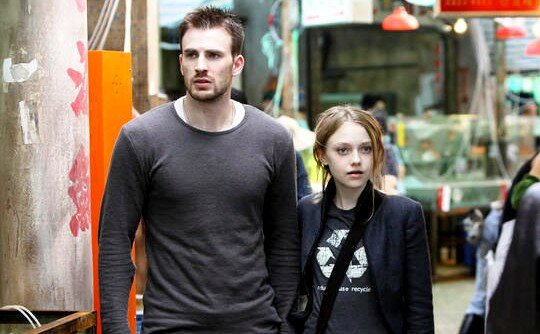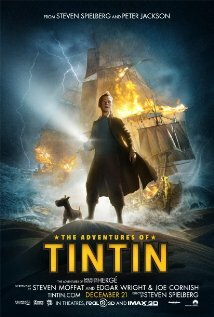If something bad ever happens, just do what Hollywood does and blame it all on the Nazis. Seriously, if Paul McGuigan’s sci-fi thriller Push is anything to go by, they’re responsible for everything.
In a ridiculously overloaded voice-over, Dakota Fanning’s character explains how Nazi experiments resulted in a breed of artificially enhanced humans with paranormal abilities. No, this is not an episode of Heroes, but it might as well be; there are those who can use telekinesis, ‘Movers’, those who can visualise the future, ‘Watchers’, and those who can control minds, ‘Pushers’. But that’s only the beginning; there are also ‘Sniffs’, ‘Stitchers’, ‘Wipers’, ‘Shadows’ and a whole range of talents. You’re going to want to bring along a pen and some paper to this one, folks.
It’s almost as if every time David Bourla hit a wall when writing the screenplay – which was clearly quite often — he’d simply invent a new power, and thus insert a new character capable of said power, to keep things moving along. The result is a film featuring so many different characters with so many different powers, remembering them all requires a glossary. In fact, if you plan on seeing Push, do yourself a favour and take with you a print out of ‘The Powers’ section on the film’s Wikipedia page. I kid you not, it will be to your benefit.
While you’re on the page, you might as well print out the section on the film’s plot, because Lord knows you’ll need that too. From what I gathered, it follows Nick Gant (Chris Evens), a ‘Mover’ situated in Hong Kong, who is haunted by the memories of his father’s murder when he was a boy. The killer was Henry Carver (Djimon Hounsou), a ‘Pusher’ who works as an operative for the Division, the company that continued the Nazi’s experimentations once they bit the dust. At the Division, Carver is testing a potentially lethal enhancement drug on another ‘Pusher’ named Kira (Camilla Belle). She’s the first ever to survive the treatment, but manages to flee the facility and inexplicably winds up in Hong Kong, which tends to happen an awful lot in this film. Meanwhile, Nick is told by a strange 12 year-old street child named Cassie (Dakota Fanning) — a ‘Watcher’ still learning how to harness her future-telling abilities — that they must find Kira and a mysterious black suitcase. Why exactly? I have absolutely no idea.
In fact, I can’t think of a single word in the English language that would justly convey the sheer stupidity, and impenetrable complexity, of Push’s narrative. So in the same way Bourla’s screenplay seems to make up the rules as it goes along, I’m going to just invent one instead:
stu-plex (stü-ˌpleks)
adj. stu-plex-er, stu-plex-iest
1. Something that is both irreconcilably stupid and complex at the same time.
e.g ‘Push’ is an incredibly stuplex film.
|
Don’t think I won’t lens flare you… |
Maybe it worked better on paper, as Paul McGuigan has managed to pull together a decent cast. Dakota Fanning’s turn as Cassie explains why, at only fifteen years old, she is a major player in Hollywood. Thanks to her headstrong characterisation, it actually seemed somewhat plausible for a 12 year-old girl to carry a loaded gun in her bag, next to her drawing book. Chris Evens is amicable enough as the film’s leading man, despite a bad habit he must have picked up from his Fantastic Four days where he sees it necessary to deliver each sentence like it’s a one-liner. Then there’s the antagonist, Henry Carver, portrayed with assured blankness by Djimon Hounsou, a performance that scarcely draws from his excellent work in 2006’s Blood Diamond. Lastly, Camilla Belle is ever gorgeous as enigmatic Kira, but it does grow boring watching her pout her way through the entire film.
An obvious fan of extreme angles, cinematographer Peter Sova’s vibrant framing of the gritty Hong Kong backdrop is quite a spectacle. Paul McGuigan’s (Lucky Number Slevin) direction also has a kinetic energy that makes this wordy film feel like it’s going somewhere, even when it’s clearly not. The action in Push, however, is oddly underwhelming and generic. It appears that McGuigan has deliberately gone with the minimalist approach to special effects, using CGI as scarcely as possible. This is fine if you’re doing a conventional action flick, but for a sci-fi film about people with special powers, it feels like a wasted opportunity. For example, the visual cue of ‘Moving’ in the film is merely lens flare overlayed with a deep, warping noise. Aside from one specky scene involving floating guns, it’s really nothing to get excited about, which is practically Push in a nutshell. That or ‘stuplex’. Take your pick.
 Follow the author Anders Wotzke on Twitter.
Follow the author Anders Wotzke on Twitter.


![push36[1] push361 350x196 Push (Review)](/wp-content/uploads/push361-350x196.jpg)













